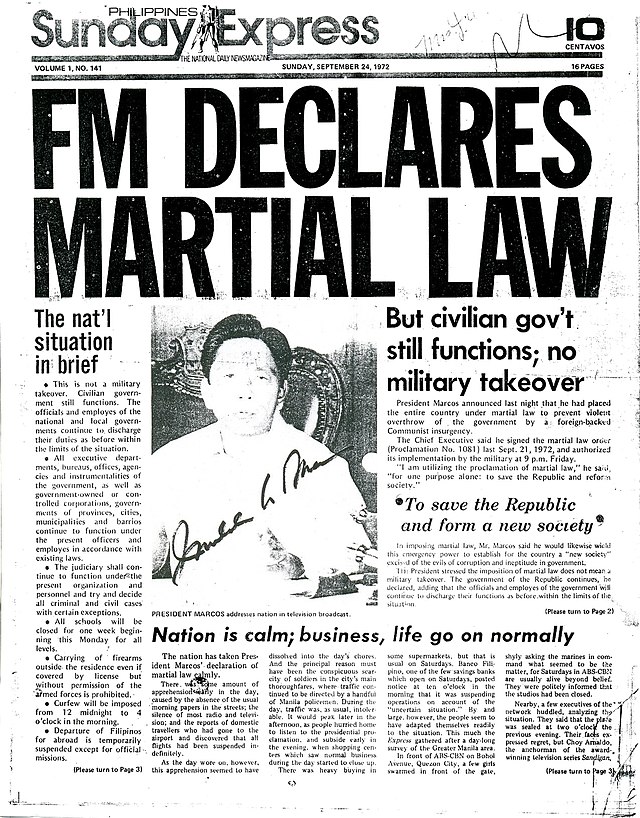Fascination About News Articles
The Ultimate Guide To News Articles
Table of ContentsThe News Articles StatementsThe Ultimate Guide To News ArticlesThe Basic Principles Of News Articles All About News ArticlesExamine This Report about News Articles
Great understanding of various topics gives trainees an one-upmanship over their peers. Although digital and social networks are readily available, we ought to not neglect exactly how important it is to read the newspapers. Parents need to attempt and inculcate the routine of reading a paper as a day-to-day regimen to proceed the tradition of the revered print medium.Newspaper article also contain at least one of the following important features about the designated target market: proximity, prestige, timeliness, human passion, curiosity, or repercussion. The related term journalese is occasionally used, typically pejoratively, to refer to news-style writing. One more is headlinese. Newspapers generally follow an expository writing design.
Within these limits, news tales additionally intend to be comprehensive. Among the bigger and a lot more revered newspapers, justness and balance is a significant element in offering info.
Newspapers with a worldwide audience, for instance, tend to use a more formal style of composing. The certain choices made by an information electrical outlet's editor or editorial board are typically gathered in a style guide; typical style guides include the and the US News Style Publication. The main objectives of information writing can be summed up by the ABCs of journalism: precision, brevity, and clarity.
News Articles - The Facts
As a guideline, reporters will certainly not utilize a long word when a short one will do. They use subject-verb-object building and construction and vivid, active prose (see Grammar). They supply narratives, examples and allegories, and they rarely depend upon generalizations or abstract concepts. Information authors attempt to stay clear of using the very same word greater than as soon as in a paragraph (in some cases called an "resemble" or "word mirror").
Headlines sometimes omit the subject (e.g., "Jumps From Watercraft, Catches in Wheel") or verb (e.g., "Feline lady fortunate"). A subhead (also subhed, sub-headline, subheading, subtitle, deck or dek) can be either a subservient title under the primary heading, or the heading of a subsection of the article. It is a heading that comes before the major text, or a team of paragraphs of the major text.

Added billboards of any of these kinds might show up later on in the post (especially on subsequent web pages) to tempt further analysis. Such billboards are additionally used as guidelines to the article in various other areas of the magazine or website, or as promotions for the item in other publication or websites. Normal framework with title, lead paragraph (summary in bold), other paragraphs (information) and contact information.

Example of a hard-lead paragraph NASA is proposing one more area task. The budget plan requests around $10 billion for the job.
The NASA announcement came as the firm requested $10 billion of appropriations for the project. An "off-lead" is the second crucial front web page information of the day. The off-lead appears either in the leading left corner, or straight listed below the lead on the. To "bury the lead" is to begin the write-up with history details or details of additional value to the readers, compeling them to learn more deeply into a short article than they ought to have to in order to find the crucial factors.
The 8-Second Trick For News Articles
Common use is that a person or more sentences each form their very own paragraph. Reporters typically define the company or framework of a newspaper article as an inverted pyramid. The crucial and most interesting aspects of a story are put at the beginning, with supporting info complying with in order of diminishing value.
It enables people to explore a subject to only the deepness that their interest takes them, and without the charge of information or subtleties that they can think about pointless, however still making that details readily available to much more interested readers. The inverted pyramid framework also allows write-ups to be trimmed to any type of arbitrary length during format, to fit in the space available.
Some authors begin their tales with the Full Report "1-2-3 lead", yet there are many kinds of lead offered. A kicker can refer to numerous points: The last tale in the news broadcast; a "pleased" story to end the program.
Longer articles, such as magazine cover write-ups and the items that lead the within sections of a newspaper, are known as. Function stories vary from straight information in several methods.
Some Known Incorrect Statements About News Articles
The reporter often details communications with interview topics, making the item much more individual. An attribute's first paragraphs usually relate an appealing moment or occasion, as in an "unscientific lead". From the visit homepage details of an individual or episode, its view quickly expands to generalities regarding the story's topic. The section that indicates what a function is around is called the or signboard.

The Editor's Toolbox: A Reference Overview for Beginners and Professionals (2001) Allan M. Siegal and William G. Connolly. The New York City Times Guidebook of Style and Use: The Authorities Style Overview Made Use Of by the Writers and Editors of the World's The majority of Authoritative Newspaper (2002) M. L. Stein, Susan Paterno, and R.